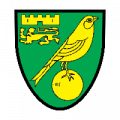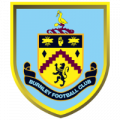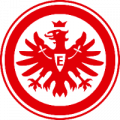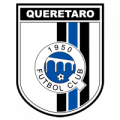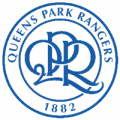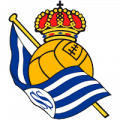With Raul Jimenez suffering from a groin injury and Sasa Kalajdzic picking up an Anterior Cruciate Ligament injury on his Wolves debut, Bruno Lage was left without a first team striker.
Goncalo Guedes, Daniel Podence and Adama Traore were all tipped to fill in up top, but Wolves have learned from their mistakes of the past.
The 2020/21 campaign saw Jimenez pick up a season ending injury in November, leaving then 18-year-old Fabio Silva to lead the line. Willian Jose was recruited in January, but one goal in 17 Premier League appearances saw the Brazilian dropped for Silva towards the end of the season.
In 2022, Wolves have taken a different approach, acting immediately to replace the void left up front. Just days after their 1-0 victory over Southampton, the club have officially announced the arrival of ex-Chelsea man, and fan favourite, Diego Costa.
Costa has not played in the Premier League since 2017. The Spanish striker left Chelsea in controversial circumstances, after Antonio Conte reportedly froze him out of the first team squad.
In the five years since his last Premier League appearance, Costa has played at the highest level of European football, as well as a venture back to his homeland. With many uncertain on whether he can reproduce his stellar 2016 form, we take a look at his journey from London to the West Midlands.
-
A return to Madrid
Costa joined Chelsea in 2014 for £32 million from then Spanish champions Atletico Madrid. The Spaniard spearheaded La Rojiblancos to a 10th La Liga title, as well as being just seconds away from a remarkable Champions League victory, scoring 36 goals in 52 games in 2013/14.
Three years later, he returned to Madrid, joining Diego Simeone's side once again. A transfer ban for Atletico meant Costa was not eligible to play until January 2018, leading to four months on the sideline in anticipation.
Costa scored in his first game back in the Copa Del Rey, netting just five minutes after coming on as a substitute. In his first La Liga game since returning, he scored the second in a 2-0 win over Getafe. In true Diego Costa fashion, he jumped into the crowd to celebrate, earning his second yellow card and therefore a red.
Costa settled in to life back in Spain comfortably, forming a partnership with Antoine Griezmann in attack. The pair were key to Atletico's run to the Europa League final in 2018, where they beat Marseille 3-0 in Lyon.
It would not be an article on Diego Costa without controversy. In April 2019, Costa was handed an eight game ban for comments made to Spanish referee Gil Manzano. During a 2-0 defeat away to Barcelona, the Spaniard lost all composure just 20 minutes into the game.
A four game ban was handed out as Costa made repeated comments about the referee's mother, before a further four game ban for preventing the referee from showing cards to other Atletico players. Costa was also fined £5,200.
In December 2020, Costa agreed to terminate his contract at Atletico Madrid, leaving him as a free agent. Atletico went on to win La Liga in 2020/21, earning Costa his second Spanish league winners medal, matching his Premier League tally.
During his second spell in the Spanish capital, he scored 19 goals in 81 appearances.
-
Back to Brazil
Although having Spanish citizenship, Costa was born in Brazil. Appearing in friendlies against Italy and Russia in 2013, many thought Costa was set to lead the line in Brazil's home World Cup of 2014. Although in late 2013, the striker changed his mind, and opted to play for Vincente Del Bosque and Spain.
At the time, Spain were the World Champions, possibly prompting Costa's decision. By living in Spain for five years, he had satisfied FIFA's requirements and was granted Spanish citizenship, leaving his homeland bare in attack.
Brazil went into the World Cup with Fred and Jo as their main strikers, leaving much of the emphasis on a 22-year-old Neymar. In the eyes of Brazilian fans, it would have come as a relief to see Costa miss the World Cup through injury.
In August 2021, Costa finally returned to Brazil, plying his trade at Atletico Mineiro. The move seemed to signal the end of an exciting career, scoring just five goals in his 19 games for the club.
He was part of a new Golden Age for Atletico Mineiro, helping the club to their second league title in 50 years, before completing the league and cup double just two weeks later. Costa terminated his contract in January 2022, weeks after these historic achievements.
-
A new challenge ahead
Costa heads to the Premier League with the eyes of the world eagerly anticipating his return. Turning 34-years-old next month, it is unrealistic to expect the Spaniard to hit the blistering heights of his Chelsea days, although maybe that is not what people are hoping for.
Although seeing him score goals would be incredibly nostalgic, many are hoping to see Costa's nasty side, aggravating defenders and deceiving referees.
Wolves supporters will certainly be hoping he is the man to fix their offensive issues. A physical presence in attack may be what Bruno Lage has been seeking, being able to bring the likes of Daniel Podence and Pedro Neto into the game in the final third.
It is unclear which version of Diego Costa will turn up at Molineux. Even the most stubborn West Bromwich Albion fan would find it difficult not to be excited by his return. No matter what happens, it is fair to say that Wolves supporters will enjoy the ride.











